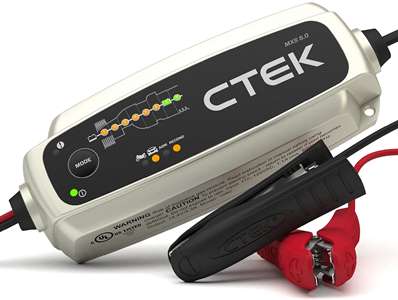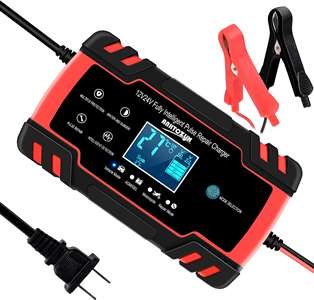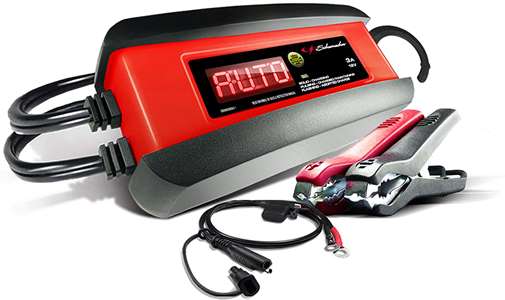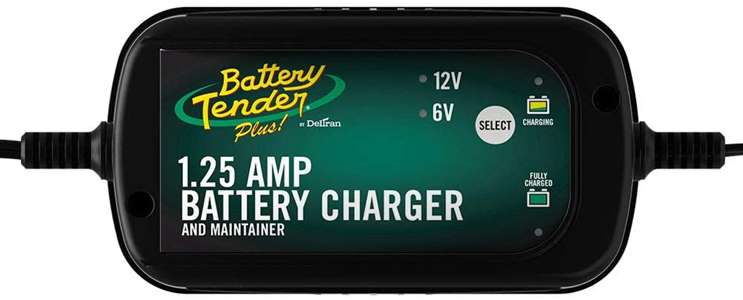
Imagine this: the battery of your car, or any other vehicle is dead. What would be your first move? Usually, everybody would want to charge it instead of buying a new one. I believe you would do the same as well. This is because the battery is not fully dead, so it can be restored most of the time.
If you are looking for the best method to restore power to your battery then there are different options available for you in the market and it is important that you know how they work.
From the different options of restoring power to a battery, we will be exploring battery chargers and maintainers. We will discuss what a charger and maintainer are, what they do, and how to use them in our convo.
First of All, What is a Battery Charger?
It is known for constantly charging the battery. After you have charged your battery, you must disconnect it because it may damage the battery. I have observed that some battery chargers are equipped with a feature to prevent overcharging, but still, you should remove the charger once it is fully charged to avoid overcharging.
What is a Battery Maintainer?
A battery maintainer can be defined as a battery charger that supplies a small amount of charge to the battery while it is not in use. The primary benefit of a battery maintainer is to increase a battery’s life. Unlike a battery charger, you can leave it connected for a long time and have no worries about the battery getting damaged due to overcharging.
Here is the Major Difference between Battery Maintainer vs Charger
Now that you know the basic difference between a maintainer and a charger, it’s time that we discuss some major differences between a maintainer and a charger.
A battery charger which is a device for charging or recharging batteries is used when your car’s battery goes down after you haven’t used it for a long time. In other words, it is the best for when your battery is left with minimum to no charge.
After charging your battery and bringing it back to the working condition you will need a maintainer to maintain the battery’s charge. In other words, it is an automatic start and stops trickle charger that keeps the battery at an optimum.
Some of the major differences between a maintainer and a charger are the following:
- A charger continuously charges the battery, whereas a maintainer charges and maintains the charge without overcharging the battery.
- The maintainer uses a small amount of current, whereas a charger uses a high current output
- A charger may damage the battery by overcharging, but a maintainer won’t damage the battery as it doesn’t overcharge it.
Are Battery Maintainers Safe?
Many of you have questioned us if a battery maintainer is safe and if it is okay to keep them connected with the battery for a long time.
So the answer to your questions is that battery maintainers are specifically designed to maintain your automobile battery. That’s why it is safe to keep them connected with the battery.
Still not convinced? Then you must know that most of the battery maintainers come with an auto-switch that acts as a bodyguard of your battery.
Best Battery Charger for Car
Now, if battery maintainer doesn’t sound like your thing and you are looking for a classic battery charger, here are some recommendations
CTEK Fully Automatic 4.3 amp Battery Charger 12V
It features a special RECOND mode that is beneficial for reviving batteries that have not been used for a long time or are fully discharged. It uses a series of 8 patented maintenance and charging stages to maximize your battery’s life. The entire charger is splash and dustproof. See Price on Amazon.
SUHU Car Battery Charger, 12V/8A 24V/4A
Whether you are using a 12V or 24V lead-acid battery, this smart charger works with both. It is equipped with a microprocessor-controlled program to monitor the charging process. The circuit of the charger is covered with an ABS flame-retardant shell. See Price on Amazon.
Best Battery Maintainer for Winter Storage
As you have gathered ample knowledge on battery maintainers, I would like to recommend you two of the best battery maintainers in the market.
Schumacher Fully Automatic Battery Maintainer, and Auto Desulfator
This charger provides 3 amps for not just charging but also maintaining the battery. It is equipped with a microprocessor-controlled automatic amperage rate adjustment and multistage charging to enhance the life of your battery. It features a hook attachment that comes in handy to hang it when it is not in use. See Price on Amazon.
Battery Tender Plus 12V Battery Maintainer
Unlike other maintainers in the market, it offers 50% more charging power, which means it will take less time to charge your battery. It is a lightweight and compact maintainer that allows you to carry and store it without facing any problem. Best of all, you can use it with lead-acid, flooded, and sealed maintenance-free batteries. See Price on Amazon.
Will a Battery Maintainer Charge a Battery?
Will a Battery Maintainer Charge a Dead Battery?
The major concern for several people is that can a battery maintainer charge. So let me answer your question.
It is a fact that a dead battery needs too much time to recharge. The maintainer is not designed for charging a battery that is dead. Its low rate of charge is for maintaining a fully charged battery. You will require a high current to restore a dead battery.
The maintainer will charge the battery but at a very slow rate. For example, a battery below 300 amps will take 200 hours to charge fully.
How to Use a Battery Charger 12V?
Now we are at the part which you have been waiting for. Suppose your car’s battery is dead and you want to connect it to a charger. In that case, you will need the following things:
Battery charger, Jumper cable (if required), Protective clothing, Eye protection.
After you have gathered this stuff, follow the given steps to get going.
- Wear protective clothing and eye protection and ensure that the charger is as far from the batteries as the cables to permit
- Determine your battery’s voltage from the owner’s manual and ensure it matches the charger’s DC output voltage.
- Identify the positive and negative terminals.
- Ensure the charger is turned off and unplugged. If the car has a negative ground then connect the positive charger clip to the battery positive.
- Connect negative charger clip to the frame or engine block of the car. Remember that always connect the negative clip to a heavy-gauge metal part of the frame and never with the carburetor, fuel lines, or sheet-metal body parts.
- Based on the battery, set the voltage switch to 6 or 12 volts. Set the rate switch as per your desired rate and then plug the cord into a grounded outlet and switch it on.
- After your battery is charged, turn off the charger by unplugging the AC cord, removing the charger clip connected to the car’s frame, and removing the clip connected to the battery. Remove the charger and start the car.
How to Use a Battery Maintainer?
Now, that you know how to work with a battery charger let’s get into how to use a battery maintainer. The procedure is pretty much similar but there are some things that you probably want to keep in mind.
- Plug the battery maintainer into the wall and then use the alligator clips under the hood
- Use the connector for connecting the battery maintainer and alligator clips.
- Plugin the positive terminal and a negative terminal
- When you first plug it in, it will automatically determine whether it is a 12-volt battery or a 6-volt battery
- After the battery is fully charged, you can leave the maintainer there as it will continue maintaining your battery at its optimum level.
How Long Can You Leave a Battery Maintainer On?
Here we are at the most important question. Connect the battery maintainer with the car’s battery and leave it on and plugged in. Since the maintainer is automatic, it will automatically provide a minimum of 0.015 Amperes of charge when voltage drops after a time being.
Moreover, a battery maintainer is designed such that even if you leave it constantly on, it won’t damage your battery. This is because it tapers the charge on and off as the battery recharges and discharges.
To put it simply, a maintainer can be left for an entire year or until your next ride.
Will a float charger charge a dead battery?
To conclude, never use a float charger to charge your battery because it will never charge the dead or partially discharged battery. Instead, it keeps the battery at the same voltage which existed before you plugged in the float charger.
Related Article: Battery Maintainer Vs Trickle Charger – Which is better?




